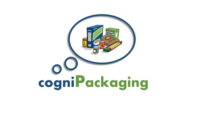The importance of packaging: understanding what really attracts consumers




Every day, consumers around the world are faced with the choice of picking out a product among hundreds along the shelf. Maybe they go for the same familiar brand they always choose, but maybe they decide to try something new. What do they look for? Do they go for the modern, minimalist packaging? Or the funky, fun packaging?
Unappealing packaging and labeling design may deter a consumer from choosing a product. If this happens often enough, this could cause a significant decrease in sales for any company. Fortunately, we do have some data on what actually drives purchase decisions in the store.
What Influences Consumers to Buy a Product?
With hundreds of products to choose from, it's important for companies to ensure their product stands out. Common packaging or labeling characteristics that help a product stand out on the shelves include readable text, attractive colors, intriguing graphics, and adequate product information. (See Image 2)
According to a recent survey that focused on packaging and labeling techniques, the top three packaging features that attract consumers are a peel-off label (59%), a recognizable logo (56%), and bright and attractive colors (53%). Bright, appealing packaging can easily catch the eye of a passerby, but it's also important to keep the consumer's interest once they've noticed the product.
While there are many common packaging features that attract consumers, the method of choosing a product can be influenced by many different factors. Below are four common motivators consumers use to influence their buying decisions:
- Values: deeply held beliefs about what is important
- Attitudes: what consumers think about certain situations
- Behaviors: how consumers spend their time and money
- Lifestyles: how a consumer spends their time
For example, a busy mom with three kids is going to look for packaging that is easily opened on the go and an environmental activist may purchase products that include recycling instructions on their packaging. It's important for companies to consider what their product is, who their customers are, and what is going to motivate those customers to buy their product.
Labeling: The Do's and Don'ts
When it comes to label design, it can be easy to make mistakes. Companies sometimes try to cram as much information as possible on the label, use poor-quality images, and neglect to include crucial product information.
When asked about packaging and labeling techniques, what did survey participants report was the main reason they would reject a product based on its packaging? “Because it doesn't include enough information about the product” (60%). However, there are many factors that may encourage or discourage customers from purchasing one product over another. With that in mind, here are a few things companies should consider when designing product labels.
Do…
- Consider an attached peel-off or booklet label
- Attach instant savings coupons
- Include important information regarding the product
- Include directions on how to use the product
- Incorporate recipes or other suggestions
- Include recycling information about the product or packaging
Don't…
- Crowd the label or use too-small fonts
- Use blurry or unrecognizable graphics
- Pick a label that won't fit on the product well
- Use bland, boring colors
- Forget about the functionality of the container
- The Significance of Branding
When customers are buying a product, they will often associate a brand's image with the way the product is packaged and labeled. Because of this, the brand that the packaging is promoting should not only stand out from similar products, but should also accurately reflect the company. The branding of a company should be focused and consistent across all marketing and advertising elements.
Additionally, it's important to remember that consumers feel a connection to their preferred brands. Particularly among Millennials, consumers like to buy products that say something about their identity. Because of this, these consumers are more likely to buy a product that gives them a personal connection or makes them feel special.
Why is Eco-Friendly Packaging Important to Consumers?
A feature that is becoming increasingly important in the modern world: eco-friendly packaging. Products that use eco-friendly materials are more likely to be purchased over similar products that do not. In fact, according to the packaging and labeling techniques survey results, 56% of participants said they are more inclined to choose an eco-friendly packaged product.
More and more, consumers are seeking ways to help fight pollution, and landfill waste. For consumers, an easy way to do this is to buy eco-friendly packaged products. In knowing this, many companies are beginning to choose to create packaging out of recycled materials, biodegradable plastics, and natural materials. The importance of eco-friendly packaging goes beyond catching the attention of consumers - it's making a real, beneficial impact on the environment.
When companies don't consider consumer's wants and needs, they can experience a drastic decrease in sales. While consumers may find a product appealing in focus groups, the packaging or labeling is what will often convince them to actually notice and buy the product. This means companies must strategically use their packaging and labeling to not only attract customers, but to make the consumer want to buy the product.
Looking for a reprint of this article?
From high-res PDFs to custom plaques, order your copy today!






